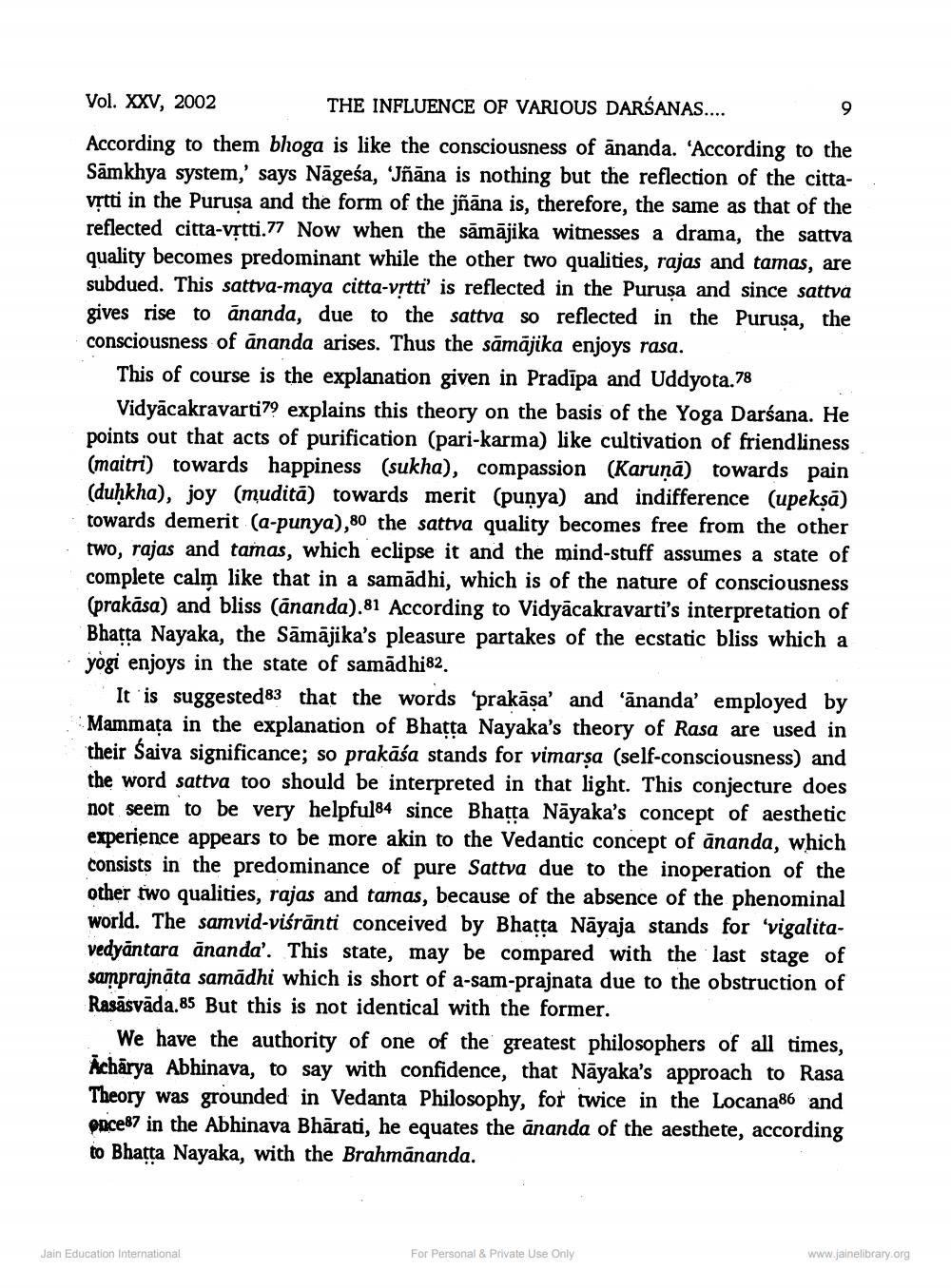________________
Vol. XXV, 2002
THE INFLUENCE OF VARIOUS DARŠANAS....
According to them bhoga is like the consciousness of ananda. 'According to the Sāmkhya system,' says Nāgeśa, 'ñāna is nothing but the reflection of the cittavrtti in the Purusa and the form of the jñāna is, therefore, the same as that of the reflected citta-vrtti.77 Now when the samājika witnesses a drama, the sattva quality becomes predominant while the other two qualities, rajas and tamas, are subdued. This sattva-maya citta-vrtti' is reflected in the Purusa and since sattva gives rise to ananda, due to the sattva so reflected in the Purusa, the consciousness of ananda arises. Thus the sāmājika enjoys rasa.
This of course is the explanation given in Pradīpa and Uddyota.78
Vidyācakravarti79 explains this theory on the basis of the Yoga Darśana. He points out that acts of purification (pari-karma) like cultivation of friendliness (maitri) towards happiness (sukha), compassion (Karunā) towards pain (duḥkha), joy (muditā) towards merit (punya) and indifference (upekṣā) towards demerit (a-punya),80 the sattva quality becomes free from the other two, rajas and tamas, which eclipse it and the mind-stuff assumes a state of complete calm like that in a samādhi, which is of the nature of consciousness (prakāsa) and bliss (ānanda).81 According to Vidyācakravarti's interpretation of Bhatta Nayaka, the Sāmājika's pleasure partakes of the ecstatic bliss which a yogi enjoys in the state of samādhi82.
It is suggested83 that the words 'prakāşa' and 'ānanda' employed by Mammata in the explanation of Bhatta Nayaka's theory of Rasa are used in their Saiva significance; so prakāśa stands for vimarsa (self-consciousness) and the word sattva too should be interpreted in that light. This conjecture does not seem to be very helpful84 since Bhatta Nāyaka's concept of aesthetic experience appears to be more akin to the Vedantic concept of ananda, which consists in the predominance of pure Sattva due to the inoperation of the other two qualities, rajas and tamas, because of the absence of the phenominal world. The samvid-viśrānti conceived by Bhatta Nayaja stands for 'vigalitavedyāntara ānanda'. This state, may be compared with the last stage of samprajnāta samadhi which is short of a-sam-prajnata due to the obstruction of Rasāsvāda.85 But this is not identical with the former.
We have the authority of one of the greatest philosophers of all times, Acharya Abhinava, to say with confidence, that Nāyaka's approach to Rasa Theory was grounded in Vedanta Philosophy, for twice in the Locana86 and once87 in the Abhinava Bharati, he equates the ananda of the aesthete, according to Bhatta Nayaka, with the Brahmananda.
Jain Education International
For Personal & Private Use Only
www.jainelibrary.org




